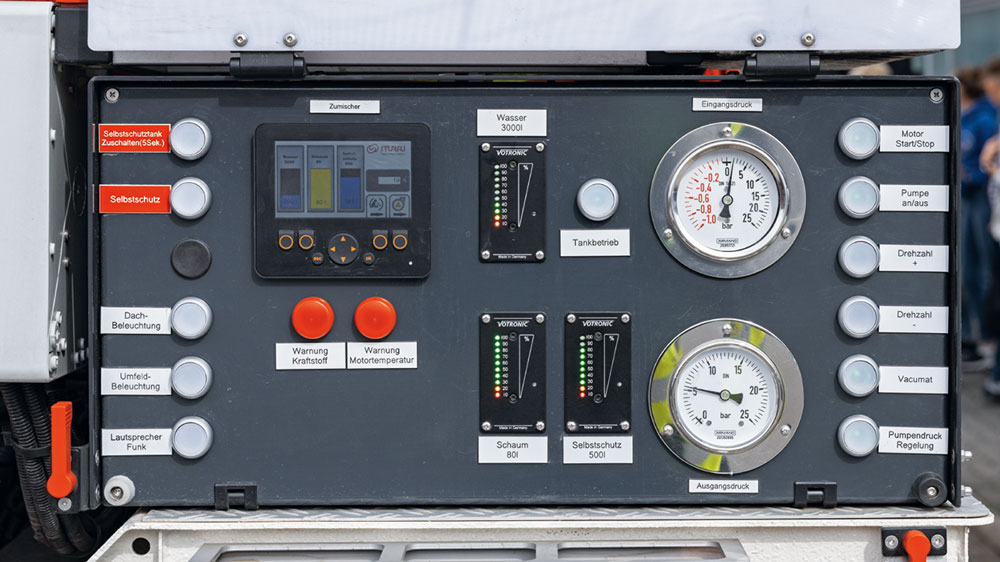Over the past few decades, our machines have become ‘smarter’, which means they require a great amount of electronics and sensors to operate
The government of India has plans to invest about INR 102 lakh crore on infrastructure projects by 2024-25. Construction equipment players will have to keep up with the trends to cash in on this humongous opportunity.

– AMIT HATGINE
Manager System Business, ifm electronic India
What is the current demand trends of construction equipment for construction and mining operations?
The government of India has plans to invest about INR 102 lakh crore on infrastructure projects by 2024-25. Construction equipment players will have to keep up with the trends to cash in on this humongous opportunity.
The construction equipment industry in India seems to be going through a rough patch as the same reported sales degrowth of 23% for the third quarter of 2021-22 YoY. Construction equipment industry is now witnessing recovery and growth due to the government’s continuous push for infrastructure development in the country.
The time is crucial, challenging and rewarding at the same time for the construction equipment Industry as the Government of India has plans to invest about INR 102 lakh crore on infrastructure projects by 2024-25. The five-year-long National Infrastructure Pipeline (NIP) will enter its second year in FY21, during which INR 1,950,397 crore are to be invested. About INR 19.5 lakh crore has been budgeted during FY21 as part of the NIP. Urban infrastructure, road transport, energy, and railways account for about 70% of this allocation.
The only way for the construction equipment players to cash in on this opportunity is by staying on top of their games by offering products & solutions married with the latest technologies coupled with low emission capabilities. Therefore, the industry will have to systematically focus on trends that are shaping it.
How is automation evolving in the construction equipment industry?
There major three trends defining construction Equipment Industry in this decade. Automation Via Internet Of Things (IoT); Artificial Intelligence (AI), Machine Learning (ML) and Emission or Electric and Onboard Diagnostics.
Automation Via IoT, AI, ML
Automation is not a new term at all. It combines technologies like the Internet of Things (IoT), Artificial Intelligence (AI) and Machine Learning (ML) to let a machine think and make decisions on its own. The same is important for the construction equipment industry, including the safety of workers, increased productive hours, less human intervention, onboard diagnostics, and more.
Construction equipment, including cranes and excavators, often works in geographies that include much risk. Automated construction equipment in such cases can enable humans to set these machines to work by themselves or operate the same remotely. This will ensure zero risk to human life if the construction equipment meets with an accident. Moreover, the same can also ensure zero errors due to fatigue caused in the minds of the workforce.

Emissions Or Electric
The new emission norms for construction equipment and tractors were to come into force from April 2021 and October 2021, respectively. Similar to BS emission norms for automobiles, these new norms are meant to make emissions greener. This might mean that the costs of manufacturing new construction equipment might get higher, but the OEMs can easily pass down this cost to end consumers. Moreover, OEMs do not have a choice but to meet the country’s government’s emission norms.
The beauty of construction equipment lies in the fact that many of these are operated in defined places, and these do not have to travel to different locations frequently. Therefore, OEMs investing
in electrifying their offerings to end consumers can create a win-win for themselves and the end consumers. Portable charging stations can easily be manufactured and placed at the place of operations, which will benefit the consumer by lowering fuel expenses. In addition, several reports have claimed that electric vehicles are easier and more economical to maintain than ICE ones.

Onboard Diagnostics
Another milestone on the technology front is onboard diagnostics and repair, which can be a game-changer for the construction equipment industry. The biggest setbacks when construction equipment fails or malfunctions come in the form of the time it takes for the service personnel to reach the spot and find the fault to repair the same. What’s got added to this overall cost is that the operator might have to rent a replacement machine until the original one comes back.
Equipping construction equipment with onboard diagnostics can help operators diagnose and, in many cases, repair the same onsite. This is because the fault is often tiny, but the operator’s lack of knowledge forces the end consumer to send the machine to the repair shop. The costs involved also include transportation of the vehicle or the repair expert being flown to the site.
What are the challenges in the sector you are?
We, ifm electronic are the one of tech-partners, offering Electronics solutions on CE Equipment’s.
We are witnessing a major semiconductor shortage which is hampering CE industry.
The semiconductor shortage is a growing problem impacting industries from automobiles to construction equipment. Over the past few decades, our machines have become “smarter”, which means they require a great amount of electronics and sensors to operate. The increased dependence upon technology exposes the construction equipment supply chains to hiccups in technology supply chains. Global manufacturers who are unable to procure semiconductor chips are forced to stop production. Used prices for construction equipment have increased over the past year as a result of higher commodity prices and strong economic demand. We could see an incremental step higher over the next twelve months as a result of semiconductor shortages impacting new machinery production, as well as higher input costs (steel, copper, etc). chips will still be in short supply throughout 2022, and with some component lead times pushing into 2023, meaning that the shortage will have lasted 24 months before it recedes, similar to the duration of the 2008–2009 chip shortage.
While the shortage will endure through 2022, it will be less severe than in fall 2020 or most of 2021, and it will not affect all chips. In mid-2021, customers were waiting between 20 to 52 weeks for multiple kinds of semiconductors, causing manufacturing delays or shutdowns which led to revenue losses in the tens or even hundreds of billions of dollars. By the end of 2022, Deloitte Global predicts those lead times will be closer to 10 to 20 weeks and that the industry will be in balance by early 2023.
Hits: 1








